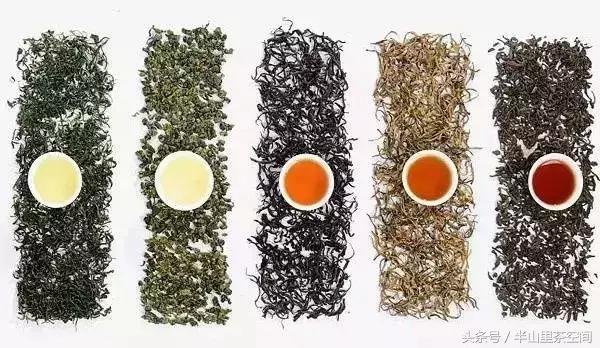Tea is the world’s second most consumed beverage after water—and for good reason. From the misty forests of Yunnan to the highland gardens of Darjeeling, tea is a story steeped in history, culture, and flavor.
In this guide, you’ll explore:
✅ The Ultimate Tea Guide and their fermentation levels
✅ Tasting notes and iconic examples from each tea type
✅ The health benefits of different teas
✅ How tea is celebrated across cultures worldwide
🌱 1. The Six Types of Tea & Their Fermentation Levels
All true teas come from the Camellia sinensis plant. What differentiates them is the level of oxidation (also referred to as fermentation) during processing.
| Tea Type | Fermentation Level | Key Characteristics |
|---|---|---|
| Green Tea | 0% (Unfermented) | Fresh, grassy, rich in catechins |
| White Tea | Slight (Minimal) | Delicate, sweet, floral |
| Yellow Tea | Light | Mellow, smooth, slightly fruity |
| Oolong Tea | Partial (10–70%) | Floral or roasted, complex flavors |
| Black Tea | Full (100%) | Bold, malty, sweet |
| Dark Tea | Post-fermented | Earthy, probiotic-rich, aged |
Each tea undergoes unique steps—withering, rolling, oxidation, drying—which shape its taste and aroma.
🍵 2. Tea Flavor Profiles: A Global Tasting Journey
🌿 Green Tea: Nature in a Cup
- Longjing (Dragon Well) – Bean and orchid aroma, smooth body
- Biluochun – Floral, vegetal freshness
- Sencha (Japan) – Seaweed-like umami, bright green liquor
🤍 White Tea: Light & Elegant
- Silver Needle (Baihao Yinzhen) – Subtle, airy, covered in fine white hairs
- White Peony (Baimudan) – More body, light floral notes
- Shoumei – Aged notes of jujube and herbs
💛 Yellow Tea: Rare & Gentle
- Junshan Yinzhen – Orange-yellow infusion, sweet and clean
- Mengding Huangya – Balanced, mellow, honeyed
🍂 Oolong Tea: The Harmony Between Green & Black
- Da Hong Pao – Wuyi rock tea with rich mineral character
- Tieguanyin – Orchid fragrance, smooth lingering sweetness
- Phoenix Dancong – Single-bush varietals with notes of honey or exotic fruits
🖤 Black Tea: Bold, Rich, and Aromatic
- Keemun – Fruity, floral with “Keemun aroma”
- Lapsang Souchong – Pine-smoked, hints of dried fruit
- Darjeeling – Muscat grape aroma, known as “Champagne of Teas”
- Assam – Malty, perfect for milk tea
🧉 Dark Tea (Hei Cha): Earthy and Aged
- Raw Pu-erh (Sheng) – Bright, vegetal, bold
- Ripe Pu-erh (Shou) – Smooth, mellow, earthy
- Fu Brick Tea – Contains golden probiotic “flowers” beneficial to digestion
🧬 3. Health Benefits of Different Tea Types
| Tea Type | Main Health Benefit |
|---|---|
| Green Tea | High in antioxidants (catechins); supports weight loss and brain health |
| White Tea | Anti-inflammatory, supports immune system and skin health |
| Yellow Tea | Eases digestion; gentle on stomach |
| Oolong Tea | Boosts metabolism, improves focus |
| Black Tea | Supports heart health; rich in theaflavins |
| Dark Tea | Aids gut health and blood sugar balance via probiotics |
✅ Tip: For maximum benefits, enjoy freshly brewed, loose-leaf tea without milk or sugar.
🌍 4. Tea Traditions Around the World
🇨🇳 China
- Gongfu tea ceremony emphasizes harmony (和), tranquility (静), joy (怡), and authenticity (真)
- Focuses on skillful brewing and appreciation of aroma and flavor
🇯🇵 Japan
- The tea ceremony (chanoyu) is rooted in wa (harmony), kei (respect), sei (purity), and jaku (tranquility)
- Matcha is central to both spiritual practice and aesthetic appreciation
🇬🇧 United Kingdom
- Afternoon tea is a cultural tradition involving black tea, milk, scones, and finger sandwiches
- Social, elegant, and steeped in British heritage
🇲🇦 Morocco
- Green tea with fresh mint and sugar is a national symbol of hospitality
- Traditionally poured from a height for a foamy presentation
🧭 5. Conclusion: Discover Your Personal Tea Story
Tea isn’t just a beverage—it’s a cultural journey, a health ritual, and a sensory experience.
Whether you’re enjoying the floral elegance of Tieguanyin, the aged complexity of ripe Pu-erh, or the vegetal crispness of Sencha, every cup tells a story—a story of earth, water, time, and human care.
So next time you steep your tea, remember: you’re not just making a drink—you’re unfolding centuries of flavor, wisdom, and tradition.
